The robots are coming. We’re not just talking about those single-use contraptions you find in some factories, but much more sophisticated solutions now walking into every part of life. From pizza delivery to bomb disposal, surgeons to solidiers, the scope of robotics is vast. Here’s 10 ideas to whet your appetite.
At the warehouse: EiraBot4
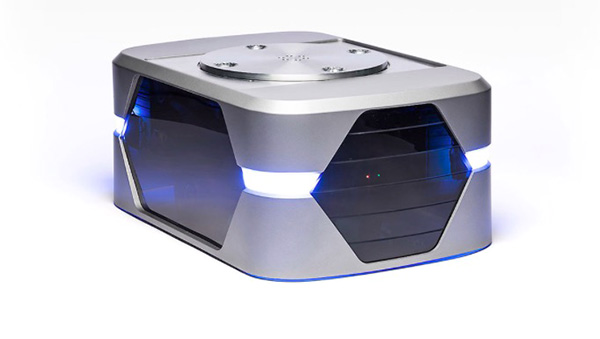
Warehouses are becoming automatic, with EiraTech’s EiraBot 4 just the latest robot to help pick the correct items from warehouse shelves. The robot can zip around the warehouse at 14kmh and will carry up to 350kg. It is controlled using beacon-like devices and Wi-Fi. You still need human pickers to grab items from the shelves (for now) but the robot saves around 70 percent of the time warehouse workers spend wandering between missions. Flash in the pan? Unlikely: 74 percent of companies surveyed by MHI in 2016 say they will adopt robotics in the supply chain – and this even extends to order fulfillment in the form of drone deliveries and self-driving trucks.
The last mile: Starships
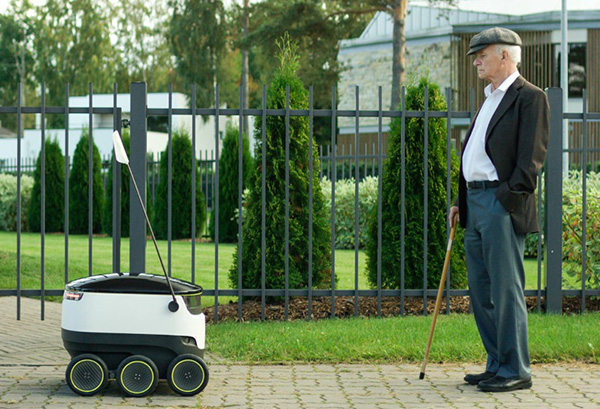
Estonian robotics startup Starship Technologies recently secured permission to trial self-driving delivery robots in Greenwich, London. The six-wheeled intelligent robots will be visiting towns and cities in the UK, culminating with launch of pilot delivery services later this year. “This technology has the potential to transform the local delivery of goods and groceries. The trial complements the work being undertaken by Greenwich on smart city innovation – work that we believe will be significant for all cities in the future,” said Denise Hyland, Leader of the Royal Borough of Greenwich. Meanwhile driverless cabs and other transportation are already hitting roads worldwide – even on the underground.
Meet Connie the concierge
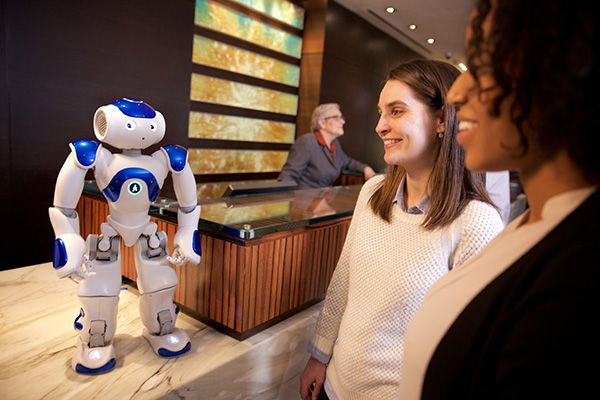
Connie is a robotic concierge built to meet and greet guests, to interact with them and to answer their questions. It would be easy to dismiss “Connie”, but doing so would be unwise. You see, Connie draws intelligence from IBM’s AI software, Watson and is a joint development between IBM and the Hilton Hotel chain. The robot is currently assisting guests at the Hilton McLean hotel in Virginia and while the robot can’t yet check guests in, it can help them with other queries. Don’t worry too much about what Connie looks like, the 58cm-tall robot is a relatively affordable (c.$9,000) French-made android called Nao, but that’s not what matters with Connie. Connie is all about an application of Watson deep learning intelligence in a real world setting and in this case the focus is on natural language processing and self-learning through interaction with customers. This is no flash-in-the-pan; Japan’s Hen-na Hotel in Nagasaki is almost completely run by robots with just ten human staff.
Pepper your pizza

Pizza Hut, MasterCard and SoftBank Robotics are teaming up to deploy customer service robots at one of the restaurant’s Singapore locations by the end of the year. In case you’ve not come across it, Pepper is capable of recognizing human emotions and adapting his behavior accordingly, according to SoftBank. At PizzaHut the robot will talk to patrons and help them with orders. It will also take their money. (Not to be outdone, Domino’s is trialing its own robot, a four-wheeled pizza delivery robot which uses autonomous car technologies and which is expected to be deployed in Australia, New Zealand, Belgium, France, the Netherlands, Japan, and Germany.)
Anbot “For your protection”
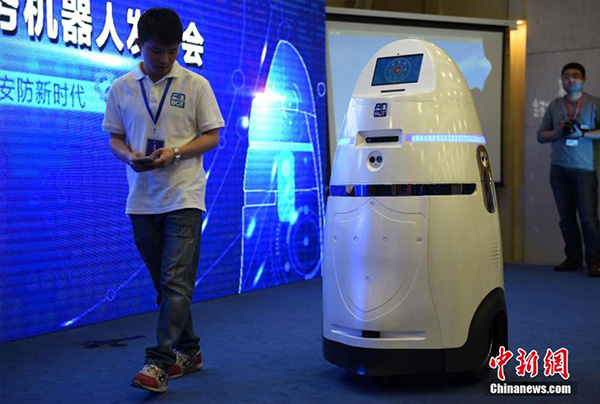
Given the deep pockets of the arms industry, it’s no big surprise that security and warfare robots are on fast track development. China’s first intelligent security robot, Anbot, looks like a Dalek and debuted at the 12th Chongqing Hi-Tech Fair on April 21. Developed by the National Defense University the robot is capable of autonomous navigation and intelligent video analysis and a top speed of 18kmh. The robot is designed for riot control – remote operators can activate its taser-like zapper to help quell violence. It also has the capacity to monitor for biochemical attack.
Ivan the soldier
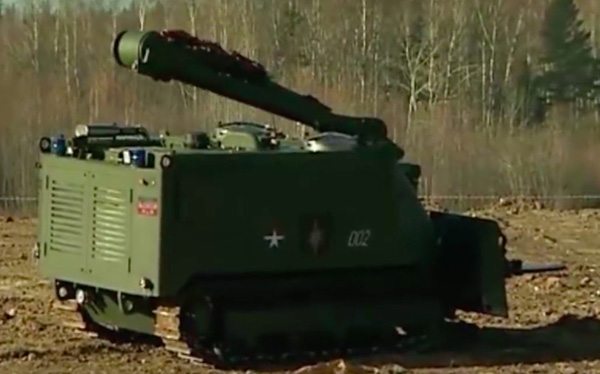
Russia is not unique in developing robot soldiers. There are over 80 counties whose armed forces are working to apply AI to military systems, but Ivan (nickname “Iron Man”) ramps it up. This all steel humanoid is designed to replace humans in battles or emergencies, and reflects just how close nations are growing to the possibility of deploying vast robot armies to guard borders and fight the wars. Russia claimed another military success recently when its giant Uran-6 mine clearance robots cleared 3,000 explosive devices around the World Heritage site of Palmyra. Russia is also developing unmanned armed boats, submarines and search and rescue droids.
Baggage handling: Leo
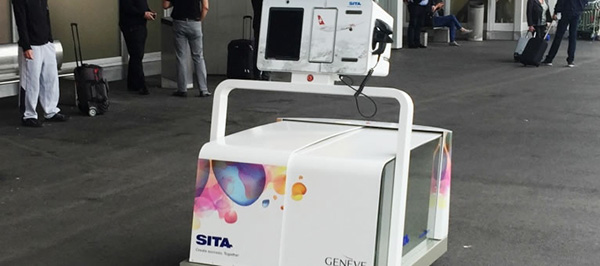
No more boring wait at check-in. (At least in theory). Leo the robot will take your bags for you as you enter the terminal. Developed by airport technology experts, SITA, Leo was recently trialed at Geneva Airport and is a fully autonomous, self-propelling baggage robot that is able to check in luggage, print bag tags and transport up to two suitcases up to 32kg in weight. The robot borrows some ideas from autonomous cars – it can navigate obstacles and has enough spatial awareness to avoid people. SITA wants to automate the baggage process all the way from baggage drop to final collection, the idea being that in transit the only person who ever touches the bag is the passenger themselves.
Ground control: Airbus

Airbus is working with Japanese and French robotics researchers at the Joint Robotics Laboratory (JRL) to replace humans with humanoid machines for “non-critical” tasks by 2020. These robots are intended for use in aircraft manufacture as part of its “Factory of the Future” initiative. These robots are very specialized and must be capable of navigating through narrow spaces such as fuselages, and executing complex tasks from a variety of positions. These robots may in future be revised for other industries with large and complex assembly challenges, such as train or ship builders.
And the professionals
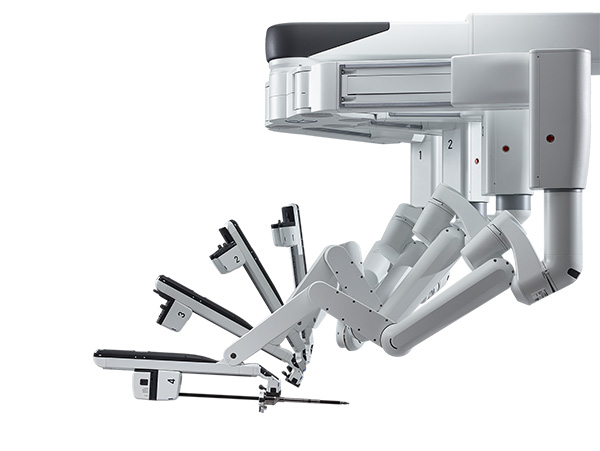
Professional roles aren’t immune to the march of the robots. There’s already a robotic pharmacist installed at the University of California in San Francisco and the Smart Tissue Autonomous Robot (Star) recently autonomously performed an experimental operation on a pig’s bowel. Hospitals in the UK and the US regularly use Da Vinci robot assistants to help cut out hard-to-reach tumors. Even lawyers may be under threat, just take a look at the DoNotPay robot lawyer and its attempt to answer natural language queries about parking fines – stick the same tech inside any humanoid machine and you’ve got a 24/7 courtroom right there.
Robots get religion? Xian’er, the robotic monk
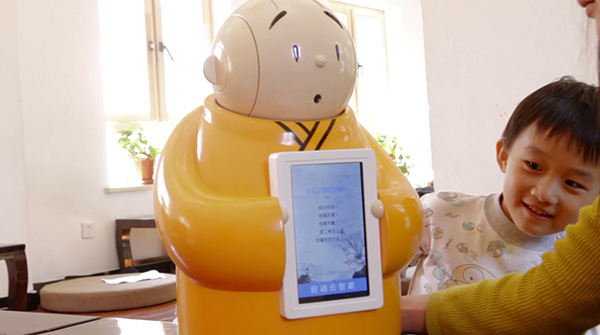
This Buddhist cartoon character just developed a life of its own as it got reborn as a 24-inch high robot that can chant, answer questions and interact with surroundings. Developed by the tech savvy monks at Longquan Temple, China, Xian’er aims to teach Buddhism to children, both face-to-face and using social media.

I've been writing about technology for nearly 20 years, including editing industry magazines Connect and Communications International. In 2002 I co-founded Futurity Media with Anthony Plewes. My focus in Futurity Media is in emerging technologies, social media and future gazing. As a graduate of philosophy & science, I have studied futurology & foresight to the post-grad level.